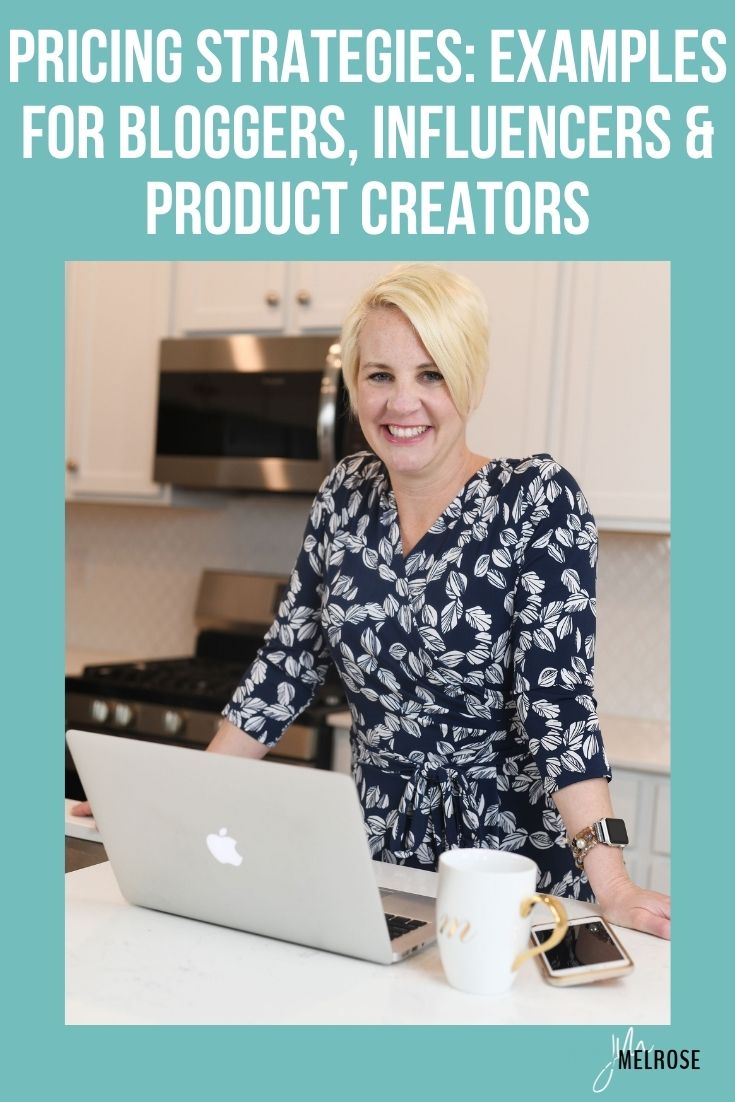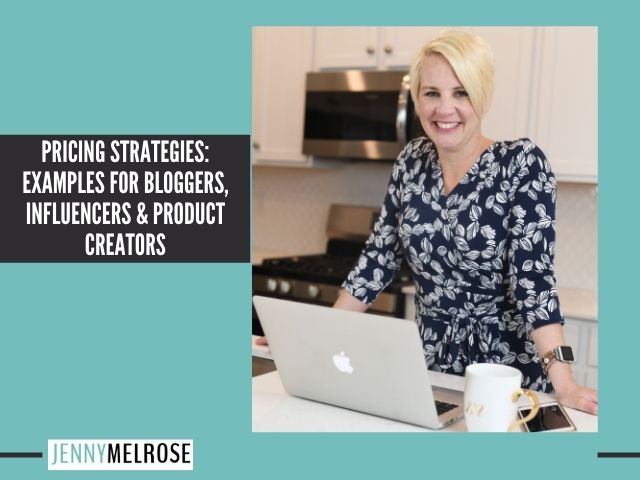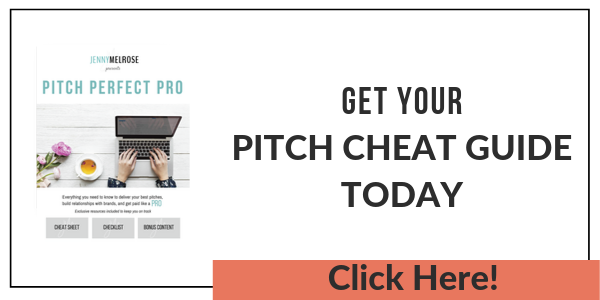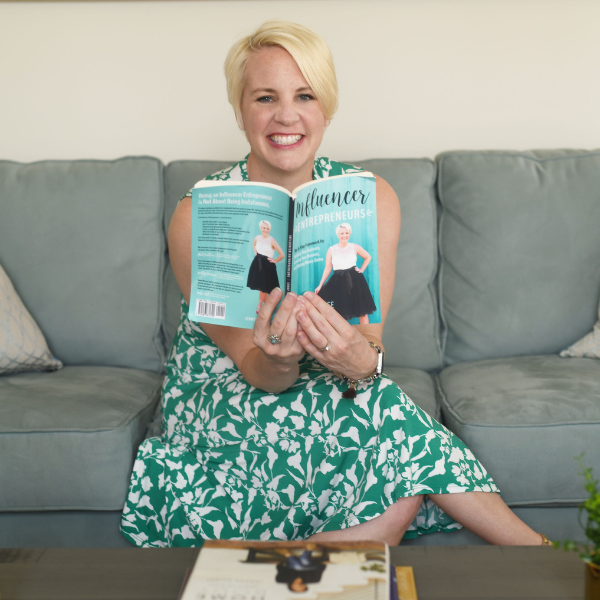Understanding how to price yourself and what to charge is one of the most difficult things, which is why we’re giving pricing strategies examples today.
IE 279: Pricing Strategies: Examples for Bloggers, Influencers & Product Creators

Hate Rate
The first thing that we need to talk about is your hate rate. It’s going to help you determine what you’re willing to charge at your absolute lowest so that you do not end up hating yourself.
No matter if you are working with brands on sponsored work or creating your own digital products, you have to know what your hate rate is.
It is that minimum price that you were willing to work for.
Keep in mind, as you’re trying to determine some of your pricing strategies, that there are certain things within your business that you despise doing, that’s probably something that you’re going to charge more for.
So for example, I’m not a lover of creating video content.
When I ran The Melrose family, it was always something that I charged more for, not just because I didn’t like it, but because I was going to hire someone else in order to create that video content for me.
You still need to make a profit when you are hiring out.
When you establish your hate rates, don’t do a blanket hate rate for one particular thing.
It could change. It could change based on client.
Let’s say you’re working with a brand and you know that they’re high maintenance and they’re going to come back and ask for multiple things.
Your prices are going up to make it so that you don’t hate the opportunity of working with them.
Questions to ask yourself when establishing your hate rate are:
- What is the amount of time that you were going to spend on those particular tasks?
- What else could you be doing that could potentially bring you more money?
- Are you going to hire some of this out or is it explicitly your one-on-one time?
- What is the minimum that you are willing to be charged for your expertise?
Sponsored Work Pricing Strategies Examples
If you are a pitch perfect pro student, you know that it’s important to put together a package price for your proposal.
You know your individual prices for each deliverable but you are not providing this to the brand.
Blog Content
Pricing for blog content is traditionally based on pageviews, but when you are actually doing keyword research and have good SEO and domain authority it matters.
When you can articulate that to a brand they are going to be willing to pay your prices, even if they are on the higher end, because they understand the value and the expert that you are for your audience.
Social Media Content
When it comes to social media brands care about your reach, engagement and of course, followers.
They definitely are looking at those follower numbers, but they also want to understand your reach and engagement.
Depending upon the platform, are you using it to it’s fullest potential with stories and reels on Instagram. Or YouTube shorts on YouTube. Or Idea Pins on Pinterest.
On Instagram industry standard is for every 10,000 followers, you can charge a hundred dollars per post or story.
Email Content
Another deliverable brands are willing to pay for is your email list, but you once again need to know your stats.
Do you actually have an email list that is engaged, that opens, that has a high click rate that converts.
If you have a list of 10,000 followers at an open rate of 30% and a click rate of 2%, brands are going to be willing to pay good money just for an email blast.
Video Content Creation
I briefly mentioned when we were talking about reels about video creation, where are they using that video creation? What type of video content is it?
Is it a reel? An Idea Pin? Or a YouTube short?
Is it something that you can repurpose into multiple forms of content?
For example if you took a long form YouTube video of you creating a recipe.
Could you then turn that into a reel, a YouTube short as well as maybe an idea pin for that brand.
Additional Fees
There of course then are also additional fees that you should be charging.
You should be charging a rush fee if a brand turns around and says, Hey, I need something in the next 48 hours.
The rush fee should be 25% of the price of the deliverable
You also want to charge more for exclusivity.
If a brand comes and says that you can’t work with someone else for 30 to 60 to 90 days, you need to be charging more for that.
Whitelisting, or dark posting should also have additional fees.
They’re leveraging the way that you normally speak with the copy that you write, the photos that you create and the trust that you have with your audience.
When it comes to whitelisting, our dark posting, you should also be charging an additional fee of 25%.
Pricing Strategies for Product Creation
Digital Products
Digital products could be in the form of eBooks, workshops, courses, memberships, things in which we kind of consider passive.
You build it and put it out there and sales passively happen without more work needing to go into it.
When it comes to your digital products make sure you are doing your market research by seeing what other people are charging for similar products.
You also want to look at what the transformation is worth to them or the value that’s in that transformation.
Physical Products
There are digital products, but then there’s also physical products.
If you are making wreaths or restoring furniture, you want to be able to look at what the cost of your materials are and as well as your shipping and then what is going to be the profit.
Something to keep in mind when it comes to materials, is that materials also include your time.
If it takes you five hours to restore furniture, five hours of your time needs to be calculated into the price of that new furniture that you’re going to sell.
Consultations/Coaching
Consultations and coaching can vary based upon small groups and also one-on-one.
What is it that I’m going to charge for my time for 60 minutes?
From there I can then determine what my small group pricing is going to look like based upon how often we’re going to meet, what is the level of commitment that they are getting from me?
Now, when it comes to one-on-one and small groups, there’s also things to keep in mind as far as the amount of time that they have to be committed to a program.
If you are going to do work one-on-one with someone, are you only working for a one-off 60 minutes or are they working with you for three months?
What is the level of commitment look like so that you are going to have recurring, consistent income.
There should also be a pay in full price, as well as a monthly price.
The pay in full, you want to be less, then the monthly so that the value can be seen in paying in full.
Action Steps:
- If you liked this episode of Influencer Entrepreneurs, please subscribe and leave a fabulous review!
- Join the conversation on Instagram by tagging Jenny when you’re listening to the podcast. She’ll send you a personal message whenever you tag her.



